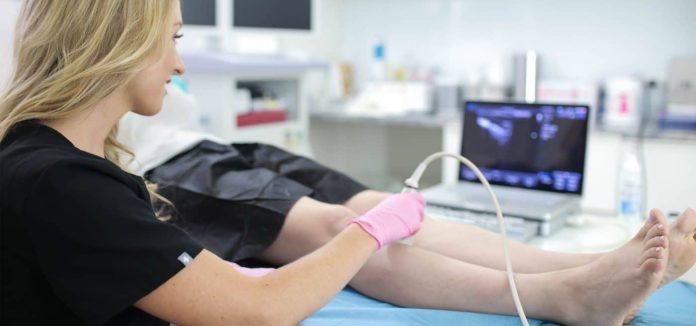In the realm of healthcare, timing is often a critical factor that can significantly impact the effectiveness of treatments and the overall outcome of a patient’s condition. When it comes to vascular health, When to see a Vascular Doctor. Vascular doctors, also known as vascular surgeons or specialists, are medical professionals who specialize in diagnosing and treating conditions that affect the blood vessels and circulatory system. Understanding the right time to see a vascular doctor can play a pivotal role in managing vascular issues, such as varicose veins, and ensuring the best possible care for your overall well-being.
Recognizing The Signs And Symptoms
One of the key factors that should prompt an individual to consider visiting a vascular doctor is the presence of concerning signs and symptoms. Varicose veins, for instance, are a common vascular condition that often manifests as twisted, enlarged veins, usually found in the legs and feet. These veins can become visible through the skin and might appear bluish or purplish in color. While varicose veins are often considered a cosmetic concern, they can also cause discomfort, pain, and lead to more severe complications if left untreated. Therefore, paying attention to the symptoms and seeking medical advice when necessary is crucial.
Indications For Seeking A Vascular Doctor
Understanding the indications for seeking a vascular doctor’s expertise can empower individuals to make informed decisions about their health. Here are some scenarios that highlight when it’s the right time to schedule an appointment with a vascular doctor:
Persistent Pain and Discomfort: If you experience persistent pain, aching, or throbbing in your legs, especially after prolonged periods of standing or sitting, it could be an indication of vascular issues. Varicose veins, for instance, can cause discomfort that worsens over time and negatively affects your quality of life.
Visible Vein Changes: If you notice the appearance of varicose veins or other noticeable changes in the veins’ size, shape, or color, it’s advisable to consult a vascular doctor. These changes might signify underlying circulatory problems that require professional assessment.
Swelling and Edema: Swelling in the legs, ankles, or feet could be a sign of impaired blood circulation. Vascular doctors specialize in diagnosing and managing conditions that affect blood flow, which makes them the right professionals to consult for such symptoms.
Skin Changes: Skin discoloration, ulcers, or sores near the ankles or lower legs could indicate a more advanced stage of vascular issues. These changes suggest that the condition might be progressing, and seeking medical attention promptly can prevent further complications.
Family History: If you have a family history of vascular conditions, such as deep vein thrombosis (DVT) or varicose veins, you might be at a higher risk of developing similar issues. Regular check-ups with a vascular doctor can help monitor and manage your vascular health effectively.
Treatment Options For Varicose Veins
Once you’ve recognized the need to consult a vascular doctor for your varicose veins, understanding the available treatment options is the next step towards managing your condition effectively. Vascular doctors employ a range of treatments based on the severity of the varicose veins and the patient’s overall health. Here are some common treatment options:
Lifestyle Modifications: In mild cases, lifestyle changes can significantly alleviate the symptoms of varicose veins. Regular exercise, maintaining a healthy weight, elevating your legs when resting, and avoiding prolonged periods of standing or sitting can help improve blood circulation.
Compression Therapy: Compression stockings are specially designed stockings that provide pressure to the legs, promoting better blood flow. These stockings can help reduce swelling and discomfort associated with varicose veins.
Sclerotherapy: This minimally invasive procedure involves injecting a solution into the affected veins, causing them to collapse and eventually fade from view. Sclerotherapy is effective for smaller varicose veins and spider veins.
Endovenous Laser Treatment (EVLT): EVLT is a procedure that uses laser energy to heat and seal off the affected vein. This method is particularly useful for larger varicose veins and can be performed on an outpatient basis.
Radiofrequency Ablation: Similar to EVLT, radiofrequency ablation uses heat to close off the vein. A catheter with an electrode at its tip is inserted into the vein, and radiofrequency energy is applied, causing the vein to seal shut.
Surgical Interventions: In more severe cases, surgical procedures such as vein stripping or ligation may be recommended. These procedures involve physically removing or tying off the affected veins to redirect blood flow to healthier veins.
Phlebectomy: This surgical procedure involves removing small sections of the affected vein through tiny incisions. It’s often used for larger varicose veins that do not respond well to other treatments.
Conclusion
what are the treatment options for varicose veins and understanding the right time to see a vascular doctor can make a significant difference in managing your vascular health. Early intervention, appropriate diagnosis, and timely treatment options provided by vascular doctors can help alleviate discomfort, prevent complications, and improve your overall quality of life. Whether through lifestyle modifications, minimally invasive procedures, or surgical interventions, the expertise of a vascular doctor ensures that you receive personalized care tailored to your unique needs. Remember, taking proactive steps towards vascular health can lead to better outcomes and a healthier future.
